My failed attempt to visit Uber’s new San Francisco HQ
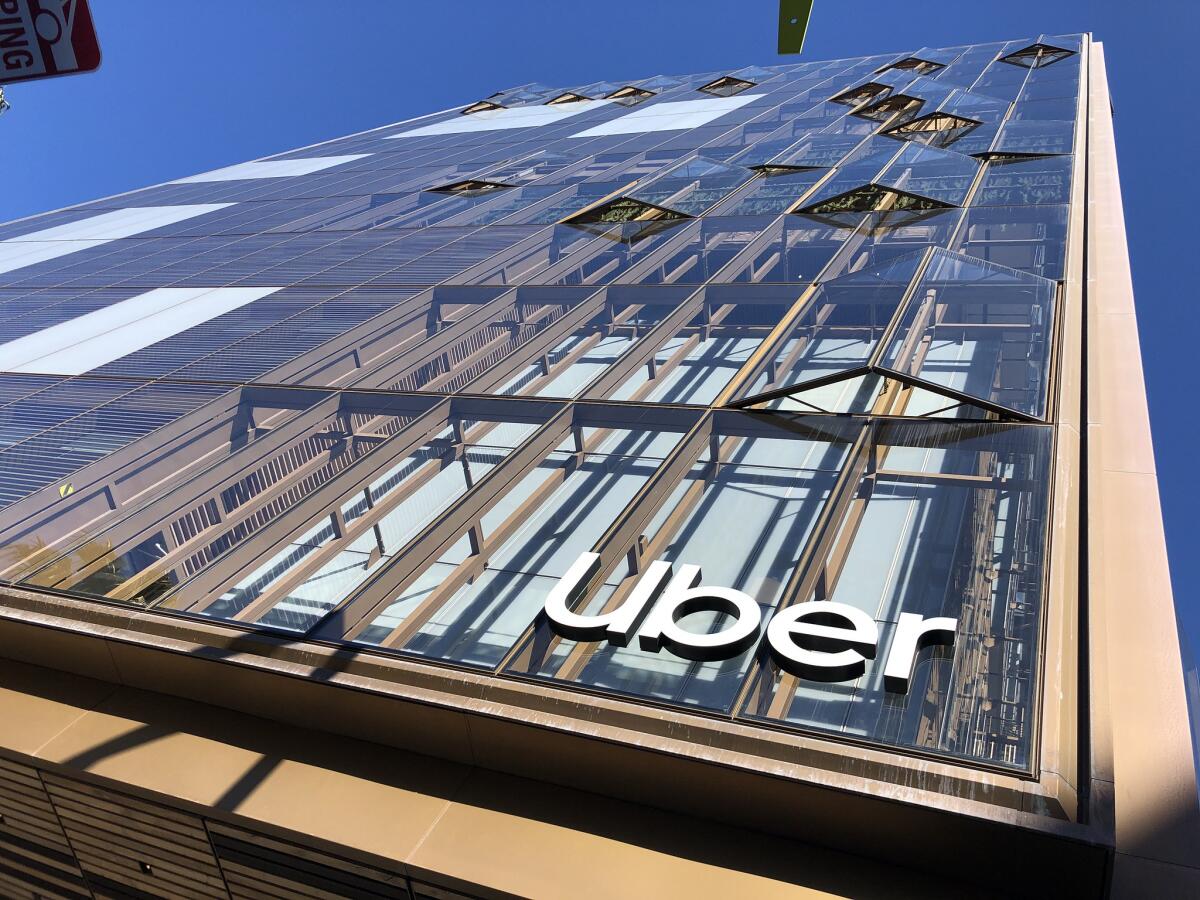
I am finding myself mildly addicted to the TikTok hashtag #ramenhacks because I’m all for ways of dressing up instant ramen so that I don’t feel like I still have the diet of a college student. (For the record, the combo with egg, Kewpie mayo and Shin Ramyun is good.) I’m Carolina A. Miranda, arts and urban design columnist at the Los Angeles Times, with your weekly arts newsletter and sexy clay videos:
California Uber alleys
Fresh air is a hot commodity in architecture, one that has been made only more evident by the pandemic. That is why I was excited to pay a visit to Uber’s new San Francisco headquarters, designed by SHoP Architects. The building — actually, two buildings connected by a pair of bridges — have facades studded with 14-foot operable windows that do something fairly radical for an office tower: let fresh air in.
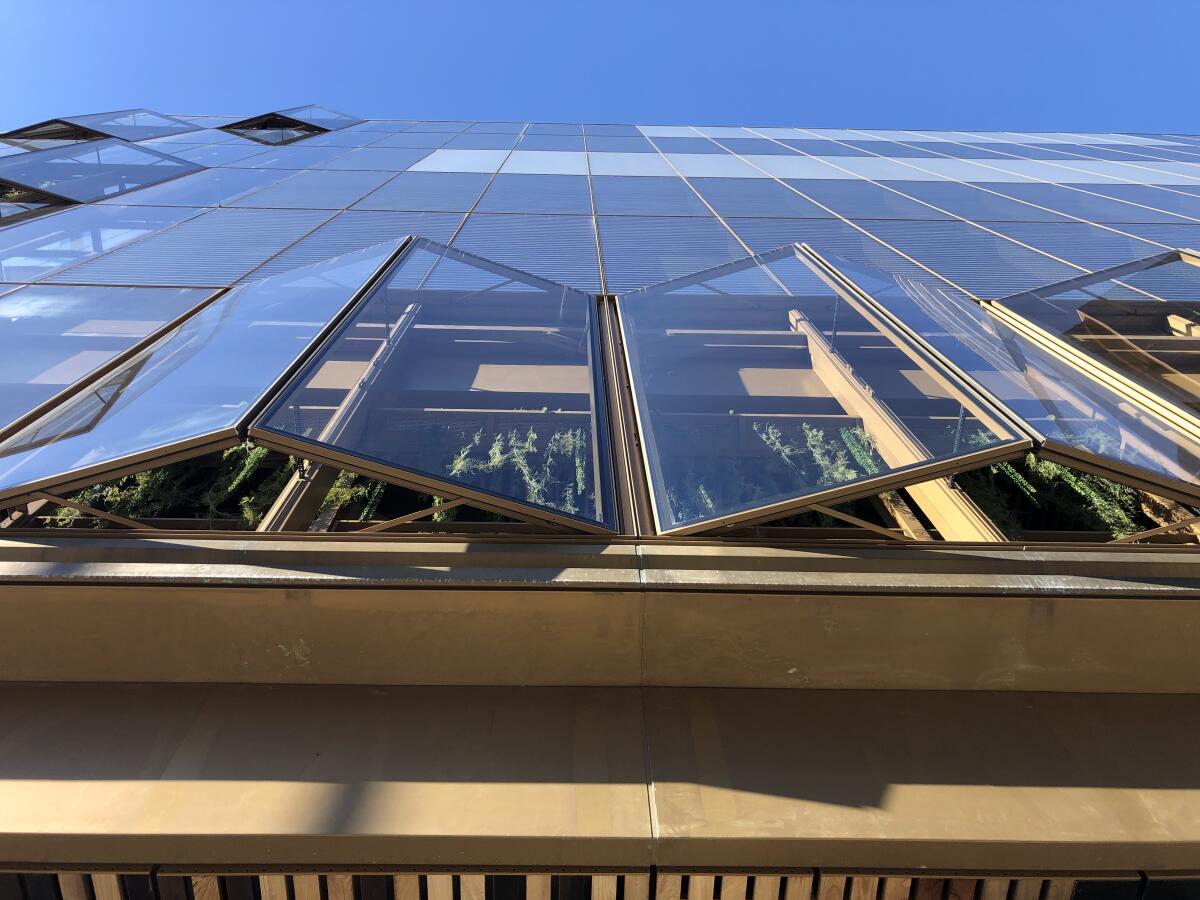
The accordion-style windows were placed in specific locations around the building, based on the patterns of the wind and the sun. And they are programmed to react automatically to external conditions: bending ever so slightly when it’s cooler or windier, or perhaps closing entirely or only admitting sips of air. Or opening more widely when the wind is still. As Fast Company’s Nate Berg noted in a story published last year upon the HQ’s completion, the windows “rebel against the model of the air-conditioned box.”
The building doesn’t rebel completely — the fresh air only travels into the multistory common areas that inhabit the perimeter of the building, where employees at Uber can hang out, eat lunch, work on a task or gather for meetings. But it does make a significant move toward unplugging the U.S. office tower from its ravenous consumption of HVAC.
Make the most of L.A.
Get our guide to events and happenings in the SoCal arts scene. In your inbox once a week.
You may occasionally receive promotional content from the Los Angeles Times.
Unfortunately, I was only able to see these architectural innovations from the outside because Uber wouldn’t allow a journalist into its headquarters without a nondisclosure agreement. And at The Times, we have a no-NDA policy.
(The whole trip left me wondering if having vital transportation infrastructure administered by a private company with controversial employment practices and murky algorithms for paying its contractors is such a great idea. It may be time to invest a few more dollars in programs like Metro Micro, L.A. Metro’s ride-hailing app, part of a pilot program that is bringing ride-sharing to eight zones around L.A. for $1 a ride. Knock LA has a good report on the program.)
Since I didn’t have to sign an NDA to see the building from the street (which, if I’m not mistaken, hasn’t been privatized yet), I made my way to S.F.’s Mission Bay neighborhood, one of those revitalized urban zones still boasting that new-condo smell, to have a look at Uber’s windows — and perhaps get a peek inside them. Thankfully, the area around the building is studded with publicly accessible parking structures, so I had some vantage points from across alleyways and streets.
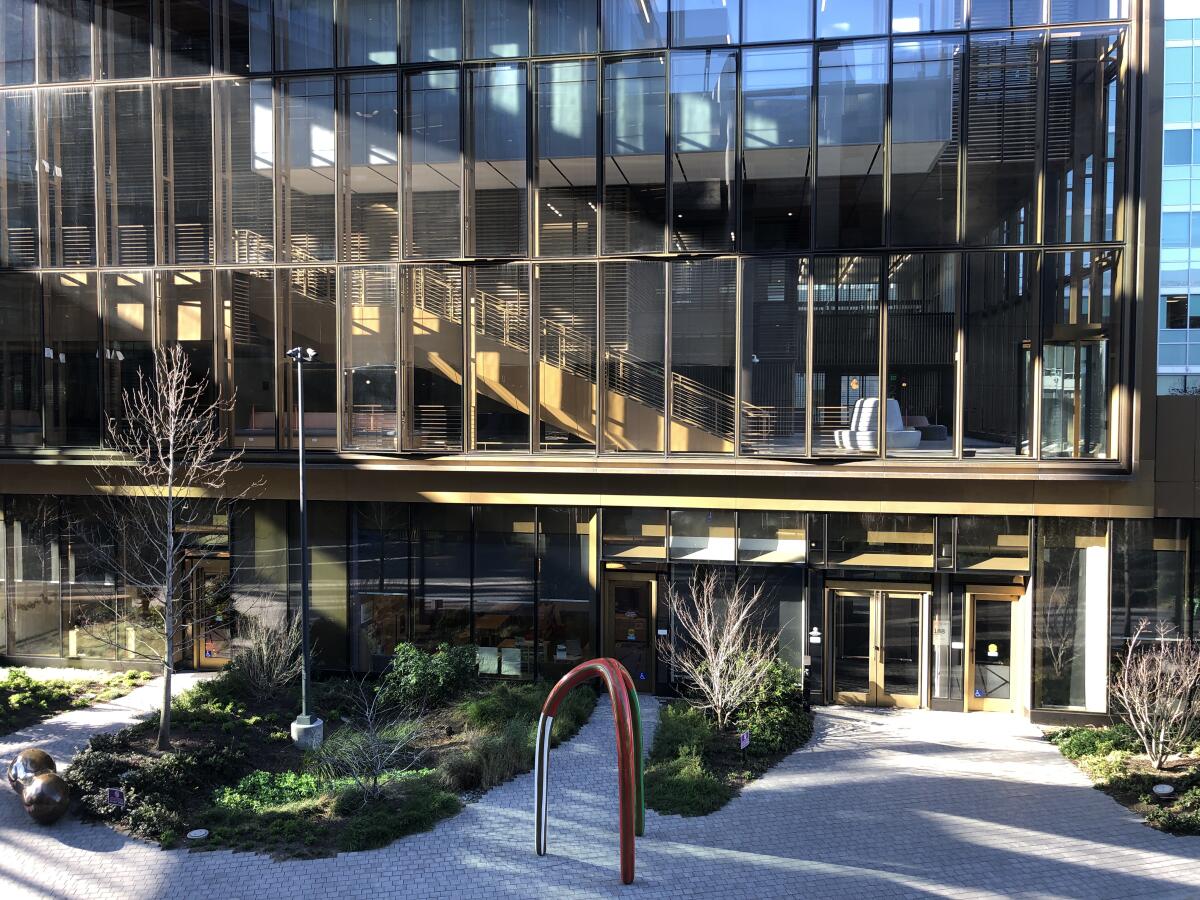
I was there on a warm and breezy day in March, and it was possible to see windows slowly opening and closing over the course of my walk. As the sun began to set and the breezes picked up, you could really see the windows kick into action: As windows in one corner opened, the ones at the other end of the facade might close.
It’s a remarkable kinetic display, giving the building a dynamic skin. Though I look forward to office buildings where humans, along with an algorithm, might also be empowered to open a window. (Crazy, I know.)
Even though I couldn’t get inside Uber HQ, the trip wasn’t a waste. As part of my afternoon spent skulking around the building, I also got a look at a separate tower, Mission Bay 3, which is also inhabited by Uber and was designed by Pfau Long, an architectural studio that is now part of Perkins&Will.
There, I got to see a series of rattan egg chairs dangling from the ceiling of the wellness center:
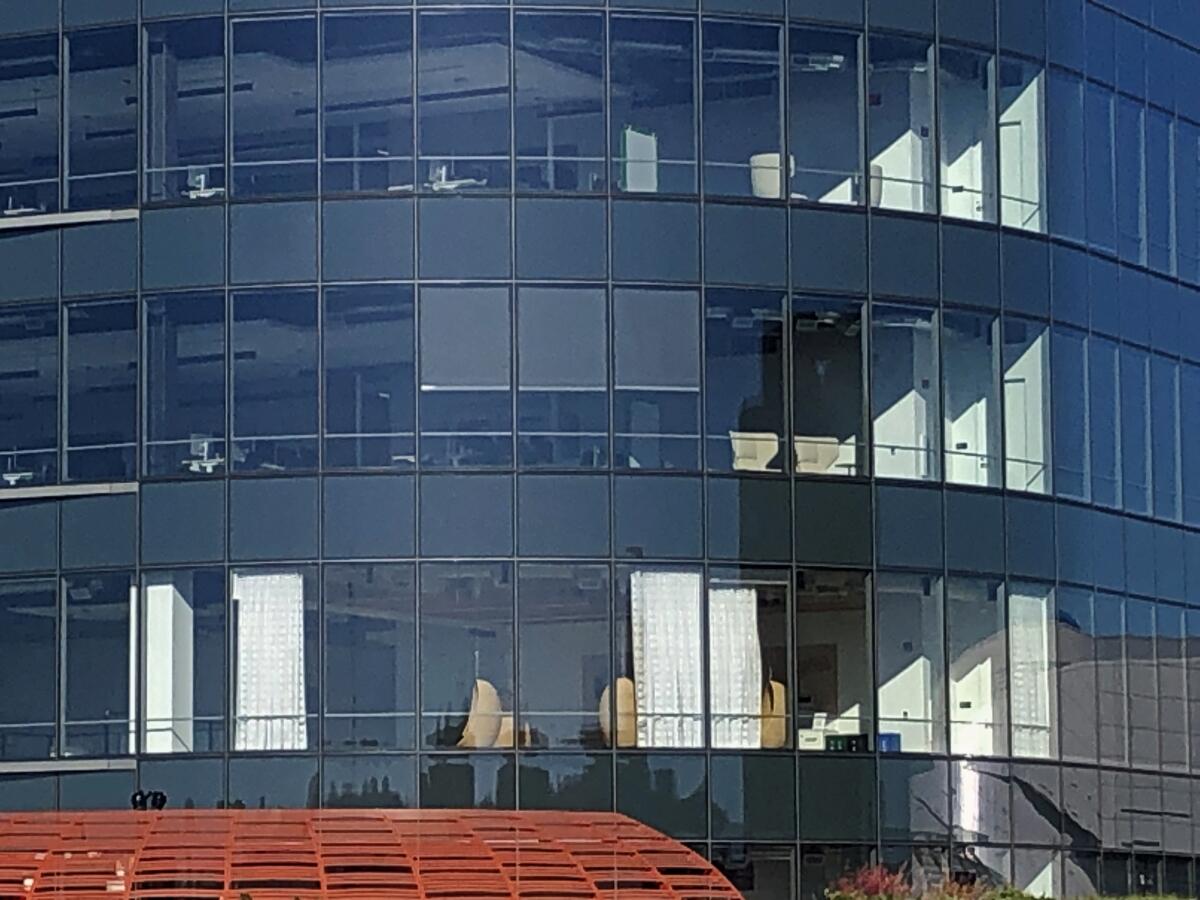
Huntsman Architectural Group did the interior design, including the wellness center (see the images online) — and the aesthetic definitely feels very microdosing-room-for-tech-bros.
It was definitely worth the lurk.
On the stage
After a couple of years of pandemic-induced quiet, Times theater critic Charles McNulty is hot on the trail of everything that is new in theater — on two coasts, no less!
In New York City, he took in a performance of Michael R. Jackson’s Pulitzer Prize-winning musical, “A Strange Loop,” which tells the story of an aspiring writer named Usher (played by Jaquel Spivey), who dreams of penning a hit musical about “a Black, gay man who’s writing a musical about a Black, gay man” but is faced with the reality of taking day jobs to make ends meet. “For much of this triumphant, emotionally lacerating show, which had its official opening Tuesday at the Lyceum Theatre,” writes McNulty, “I sat with my mouth agape, astonished and grateful that something so brutally honest and rigorously constructed had finally broken through to a Broadway stage.
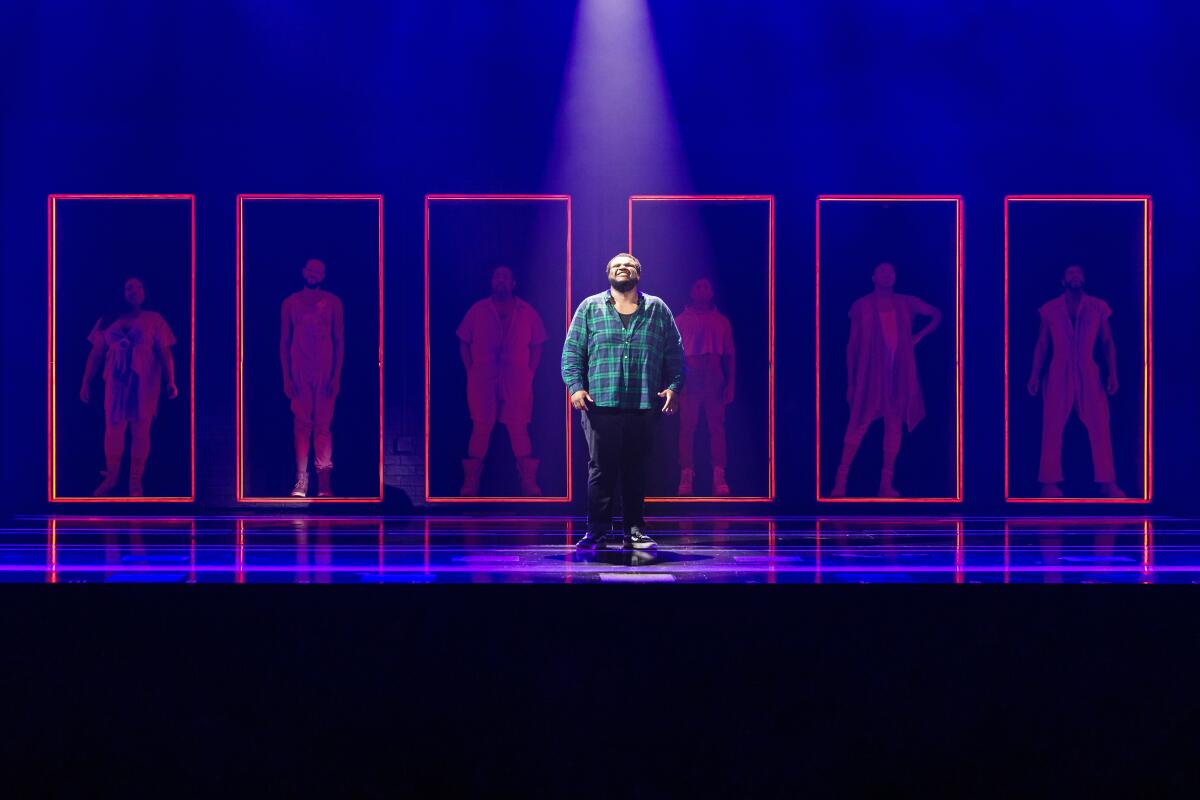
Also on Broadway is a revival of “Funny Girl” — the musical that catapulted Barbra Streisand to fame — with Beanie Feldstein in the role of Fanny Brice. The revival features a retool of the original’s “sluggish” book by Harvey Fierstein. A fan of Feldstein’s, McNulty writes that she is “most convincing as a Long Island matriarch who wants everything to run according to her plan.” But she has yet to make the role her own.
Back in Los Angeles, McNulty checked out the Tony-nominated “Hadestown,” which has landed at the Ahmanson Theatre in “smoldering fashion.” Inspired by the legend of Orpheus and Eurydice, he says the production “is crowded with vibrant musical performers.”
For L.A., the show represents a comeback — since “Hadestown” was born and first performed here. The Times’ Ashley Lee profiles Anaïs Mitchell, its creator, about the musical’s extraordinary journey: “We had 14 people and a dog in a 15-passenger van,” recalled Mitchell of the show’s early tour. “We’ve had a very long road. It was like a train that kept rolling — and here we are, back in L.A.”
Mitchell also talks to Lee what about lies ahead. Interesting nugget: She has “started casting around a little net” in her mind for the next musical project.
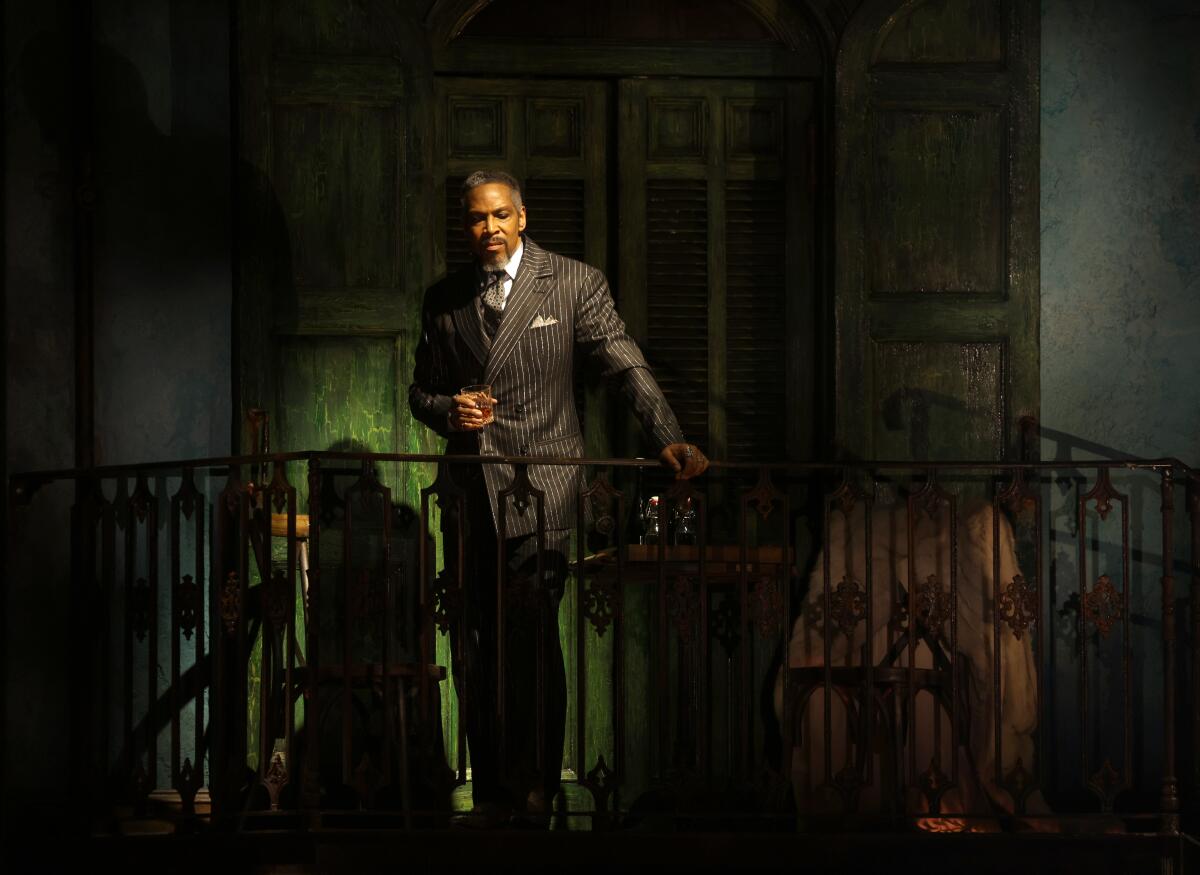
Lee also sat down for a Q&A with Lauren “LOLO” Pritchard, who played Ilse in the rock musical “Spring Awakening: Those You’ve Known” and is now set to appear in the new country musical “May We All.” “Spring Awakening” told the story of a group of adolescents while addressing topics like sexual development and mental health. The character of Ilse is a young woman who fled an artists colony where she was sexually abused. Pritchard talks to Lee about doing the show as she wrestled with her own history of abuse.
Classical notes
My former colleague Makeda Easter (whom I miss very much!) has a new arts newsletter titled “the art rebellion” that tells the stories of artist-activists. (Sign up here.)
Enjoying this newsletter? Consider subscribing to the Los Angeles Times
Your support helps us deliver the news that matters most. Become a subscriber.
In an article that touches on these themes for Represent Classical, Easter looks at some of the grassroots activist classical music groups looking to create change within the industry. “Through benefit concerts, workshops and platforming emerging artists of color, these groups represent alternatives to the paradigm of classical music and are setting the example of what an inclusive classical industry could look like.”
See you at the Biennale
OK, maybe not. Instead of going to the Venice Biennale and all of its attendant goings-on, I went to Denver. (More on that in the coming weeks.) But I can read all about the biennale on my space phone.
L.A. painter Mary Weatherford made a suite of works inspired by Titian’s 16th century masterpiece “The Flaying of Marsyas,” which shows the tragic story of the satyr from Ovid’s tale. “I thought it was the most evil painting I had ever seen,” Weatherford tells the New York Times’ Robin Pogrebin. The new works are currently on view at the Museo di Palazzo Grimani in Venice.
L.A.-based critic Andrew Berardini delivers a lyrical dispatch from Venice in Artforum, where art installations are interspersed with acknowledgments of the pandemic and the war in Ukraine. “Art and love and dancing and dreams,” he writes, “are worth fighting for, in whatever way we can.”
I’ve been intrigued by images of Simone Leigh’s installation at the U.S. Pavilion. The artist has given this very Jeffersonian building an African-style architectural makeover, by adding a thatched roof that drapes over the building’s roof:
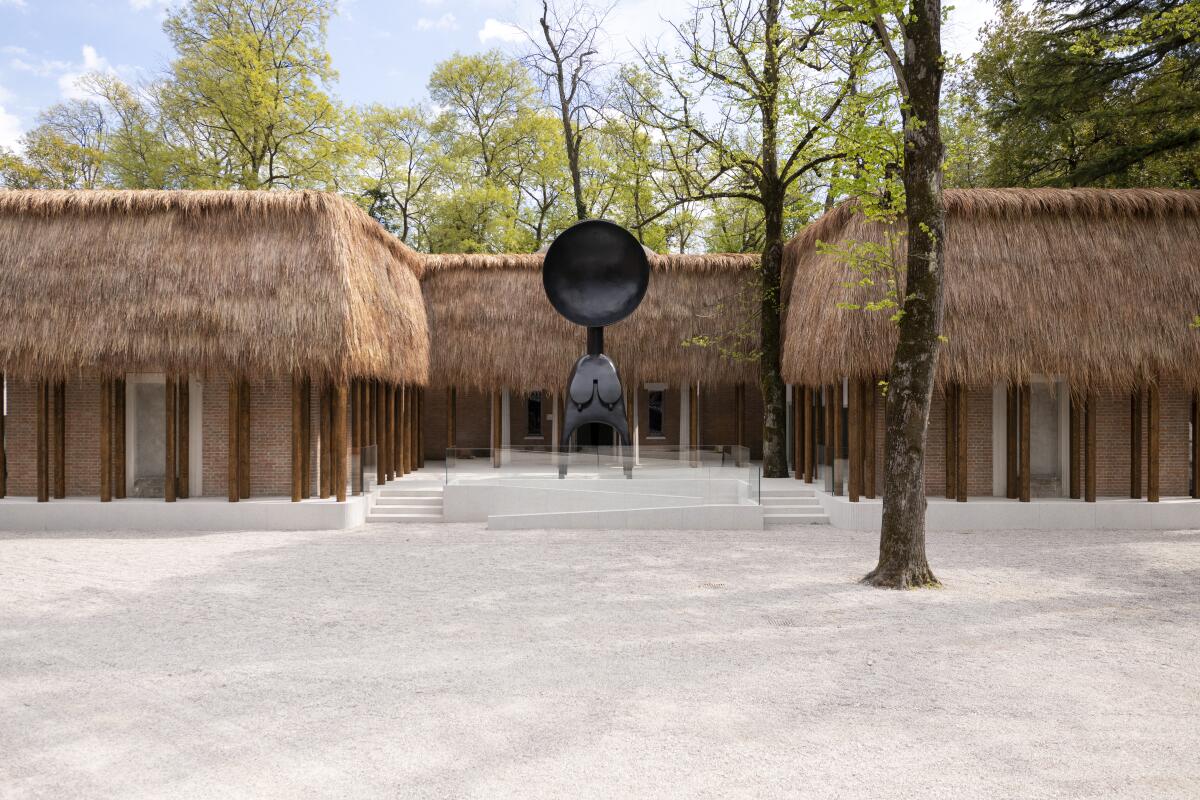
As she told the New York Times’ Siddhartha Mitter of the installation: The vibe she was looking for was “1930s African palace.”
“It has an over-the-top Blackness,” she says, “that I really like.”
Find more on the installation, which was commissioned by the ICA Boston, at this website.
Graphic arts
In the late 1960s, artist Larry Fuller launched “Ebon: Fear of a Black Planet,” a comic with a Black superhero that paved the way for others that followed. Despite its influence, Fuller’s work remained relatively obscure — until artists Stacey Robinson and John Jennings, also known as Black Kirby (in reference to DC Comics pioneer Jack Kirby), decided to expand Ebon’s story. Their work, reports contributor Danielle Broadway, is now on view at the Culver Center for the Arts at UC Riverside. As Jennings tells Broadway: It’s important to “look back and find lost creations and creators.”
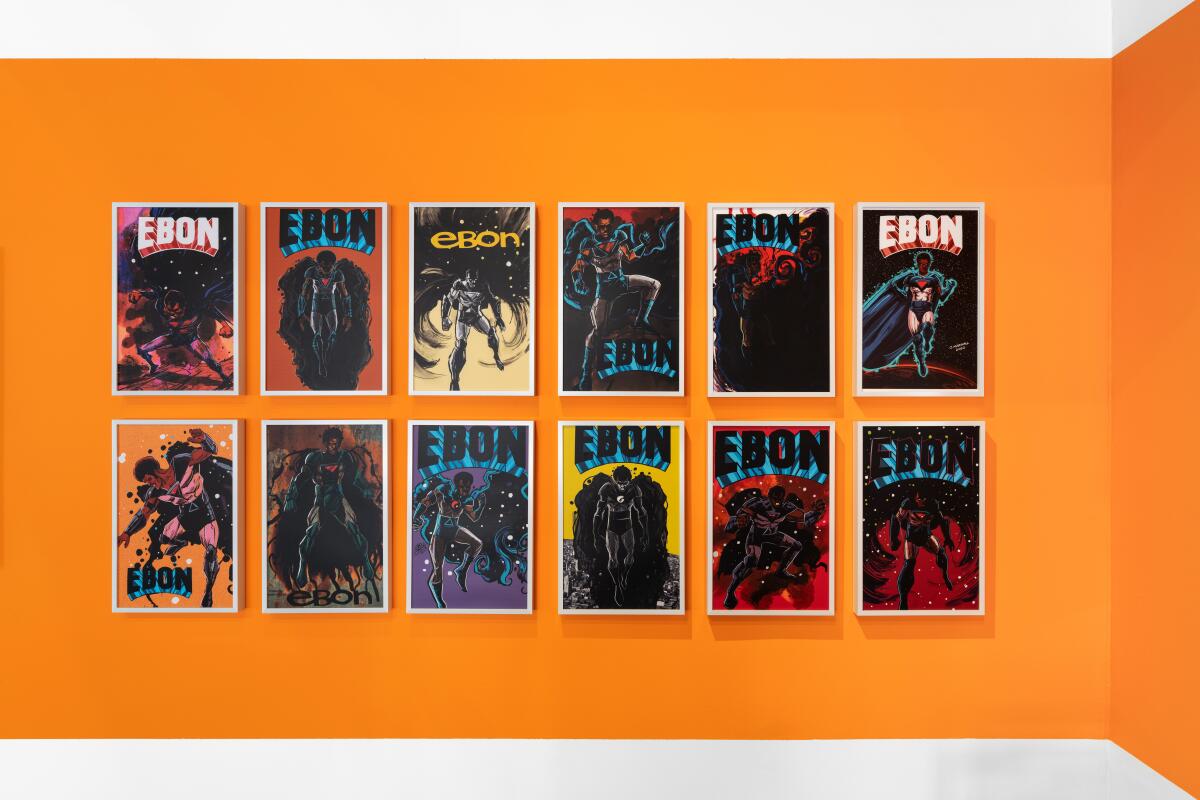
Design time
I paid a visit to an old friend: The Times’ Orange County building in Costa Mesa, where I once went to take a drug test. (I passed!) The building — really, a series of buildings that began with an office and printing plant designed by William Pereira — recently received a refresh courtesy of Ehrlich Yanai Rhee Chaney. Now known as “the Press,” the structure will soon be occupied by Anduril, a defense contractor that designs drones. It’s an opportunity to dig a little bit into the history of The Times, the history of SoCal and the history of the defense industry in Southern California — histories with an incredible amount of overlap.

Plus, architecture critic Mimi Zeiger reviews the Selldorf Architects-designed renovation at the Museum of Contemporary Art San Diego. “Renovations always mean letting go of some part of the past, but this one is particularly upwardly mobile,” she writes, “more attuned to the language of the global art cognoscenti than a sleepy beach town.”
Essential happenings
Matt Cooper has the latest on what-to-do, with a roundup of all the cool L.A. and O.C. museums shows to see in May. This includes a look at the murals of Renaissance Rome at the Getty Center and a show of work by Japanese pop painter Takashi Murakami at the Broad museum — as well as much, much more!

Moves
Laguna Art Museum has named art historian Jean Stern and curator Rochelle Steiner as curatorial fellows through early 2023. The two will assist in developing and presenting museum exhibitions and public programs.
Anna Deavere Smith’s “Twilight: Los Angeles, 1992,” a hybrid oral history/solo performance examining the roots of the Los Angeles uprising, will return to the Mark Taper Forum nearly 30 years after its world premiere.
The American Academy in Rome this week announced the winners of the 2022-23 Rome Prize. Among the artists selected are Elle Pérez, Ioana M. Uricaru, Tony Cokes and Los Angeles artist Todd Gray.
Passages
Cynthia Albritton, also known as Cynthia Plaster Caster, who became known for creating casts of rock-star penises, has died at 74.
Composer Klaus Schulze, a pioneer of electronic music, whose body of work included orchestral pieces, psychedelic jams and an electronic opera, is dead at 74.
Painter Donald Baechler, known for canvases in which he depicted crude, “balloon-like” faces,” has died at 65.
In other news
— In Ukraine, burned-out Russian tanks have become popular photographic backdrops.
— In this rather bananas essay, Sen. Dick Durbin (D-Ill.) recommends tearing down historic buildings in Chicago for the sake of courthouse security. (Maybe the courthouse could get some nice blinds?)
— A series of 23 new artworks will be landing in San Diego’s public parks starting on May 21. The installations will be free and open to the public.
— How a handful of major museums are working to weave greater diversity into their collections and their exhibition programs.
— An exhibition at the Vitra Design Museum in Germany examines how plastic became a de facto material in industrial design — and how we might be able to move beyond it.
— Over at KCET, Carren Jao previews a major installation by artists Einar and Jamex de la Torre at the soon-to-open Cheech Marin Center for Chicano Art & Culture in Riverside.
And last but not least ...
Because making pottery can be very sexy.
The biggest entertainment stories
Get our big stories about Hollywood, film, television, music, arts, culture and more right in your inbox as soon as they publish.
You may occasionally receive promotional content from the Los Angeles Times.




